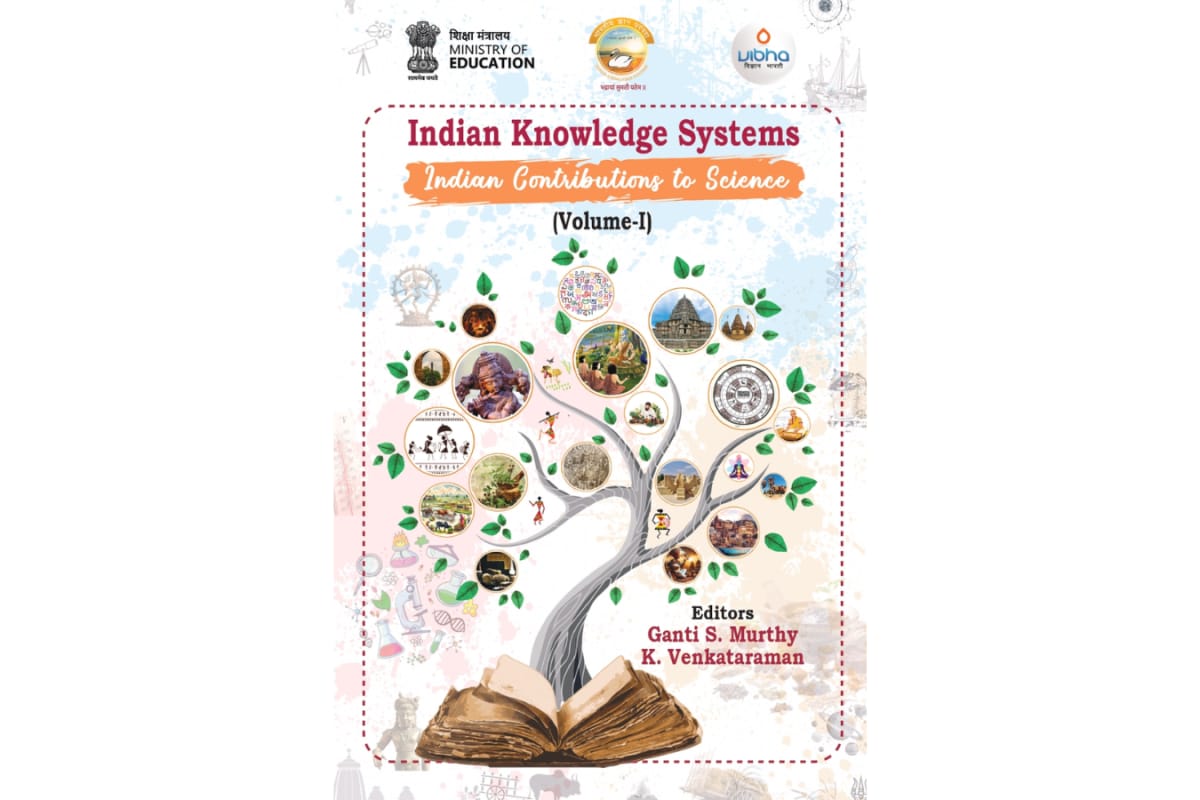The Union Ministry of Education’s Indian Knowledge Systems (IKS) division has released a new book highlighting India’s ancient scientific knowledge and innovations. It features everything from traditional
almanacs (panchangams) and precise systems of astrology and astronomy (jyotisa) to advanced instruments like the Ghatika Yantra and Samrat Yantra used for astronomical observations. The book aims to connect ancient wisdom with modern science and encourage curiosity and cultural confidence among students and teachers.
Titled “Indian Knowledge Systems: Indian Contributions to Science, Volume I,” the 430-page book aims to connect “ancient insight with modern inquiry” and encourage “scientific curiosity and cultural confidence among students and educators.”
The book showcases India’s contributions to mathematics, noting that long before Isaac Newton and Gottfried Wilhelm Leibniz formalised calculus in Europe, scholars in medieval Kerala, led by Madhava of Sangamagrama (circa 14th century), “were already exploring infinite series and laying the foundations for mathematical analysis.” It also states that ancient Indian traditions promoted harmony between science and spirituality, “unlike the Western world, where clashes between science and religion were common.”
The publication is intended for students from Classes 6 to 12 as preparation material for the Vidyarthi Vigyan Manthan (VVM)—a national science talent search exam conducted by Vijnana Bharati, a non-profit organisation promoting the “Swadeshi Science Movement,” in collaboration with NCERT and the National Council of Science Museums (NCSM).
Union Education Minister Dharmendra Pradhan said the book showcases India’s rich scientific and holistic heritage and will “inspire curiosity, strengthen cultural confidence and motivate our youth” for a developed India by 2047.
The editors, Ganti S. Murthy, IKS national co-ordinator, and K. Venkataraman, Physics teacher at PMB Gujarati Science College, Indore, said, “This volume is a thoughtful contribution to the ongoing dialogue between India’s ancient wisdom and contemporary inquiry.”
“It is crafted for the curious mind, the student, educator, and professional seeking to understand the depth and contemporary relevance of India’s knowledge traditions.”
In the foreword, Prof. Anil D. Sahasrabudhe, chairman of the National Educational Technology Forum (NETF), wrote, “It is not merely a record of past achievements, but a bridge connecting timeless knowledge to modern scientific inquiry and innovation.”
The book has eight chapters written by professors and scholars from the Indian Institutes of Technology (IITs), the Indian Institute of Science Education and Research (IISER) Pune, and the All India Institute of Medical Sciences (AIIMS), New Delhi. Covering different areas of science, technology, engineering, and mathematics (STEM), each chapter follows a traditional Indian rhetorical model, the Anubandha-Chatustaya (four aspects) framework, which addresses the learner (Adhikari), subject (Visaya), purpose (Prayojana), and relevance (Sambandha).
ALSO READ: ‘Research, Innovation & Patents Are Key To India’s Education Future’: Amitabh Kant | Exclusive
Ayurveda Dates Back 4,000 Years, Predating Hippocrates, Says Book
The new book also highlights how ancient Indian teachers, key contributors to Ayurveda, came together to discuss health issues affecting humans, animals and plants. It traces Ayurveda’s roots to the Vedas and dates its formal codification to at least 4,000 years ago, which is over 1,500 years before Hippocrates, often called the father of Western medicine.
The book describes a “remarkable” and “well-documented” event in the history of Ayurveda, a conference on health and disease management held thousands of years ago, with proceedings that have survived to this day.
According to the book, Ayurvedic ācāryas (teachers) from across India and neighbouring regions gathered on the slopes of the Himalayas to address the growing problem of ill-health. The discussions focused on diseases affecting the longevity and happiness of all living beings.
During the conference, the book states, Bharadvāja (a Vedic sage) presented the foundational concepts of Ayurveda, outlining the three core principles of etiology (the scientific study of the causes of disease), symptomatology (the set of symptoms characteristic of a medical condition or exhibited by a patient), and therapeutics as essential to achieving well-being.
These principles, the book notes, were thoroughly debated and ultimately accepted by scholars as the basis for a structured medical system. The conference was chaired by Atreya, one of Bharadvāja’s renowned students, citing references from the Charaka Samhita, a foundational Sanskrit text on Ayurveda.
The book also mentions at least 50 scholars who attended the conference. It features an illustration depicting an ancient eye surgery on a horse, based on the Śālihotra Saṃhitā, a classical Sanskrit veterinary text, which highlights the advanced medical knowledge of ancient Indian veterinarians in treating animals.
The book states that modern medicine is increasingly embracing holistic approaches, recognising the role of diet, lifestyle, and mental health, which have long been addressed by Ayurveda.
“All these ideas already find practical expression in the way Ayurveda understands and manages health and disease. This underscores the continuing relevance and importance of Ayurveda in today’s healthcare landscape,” the book stated.




